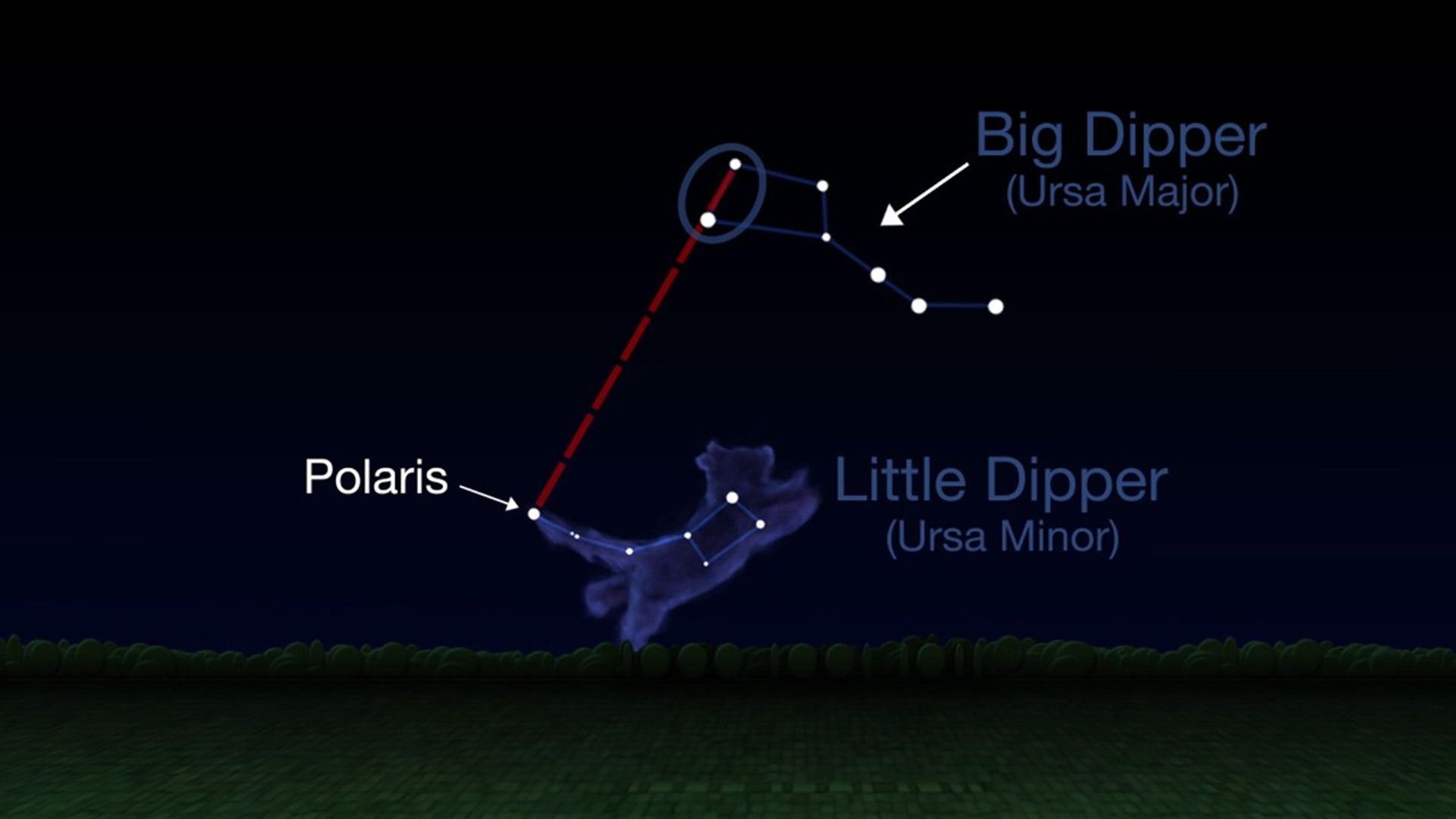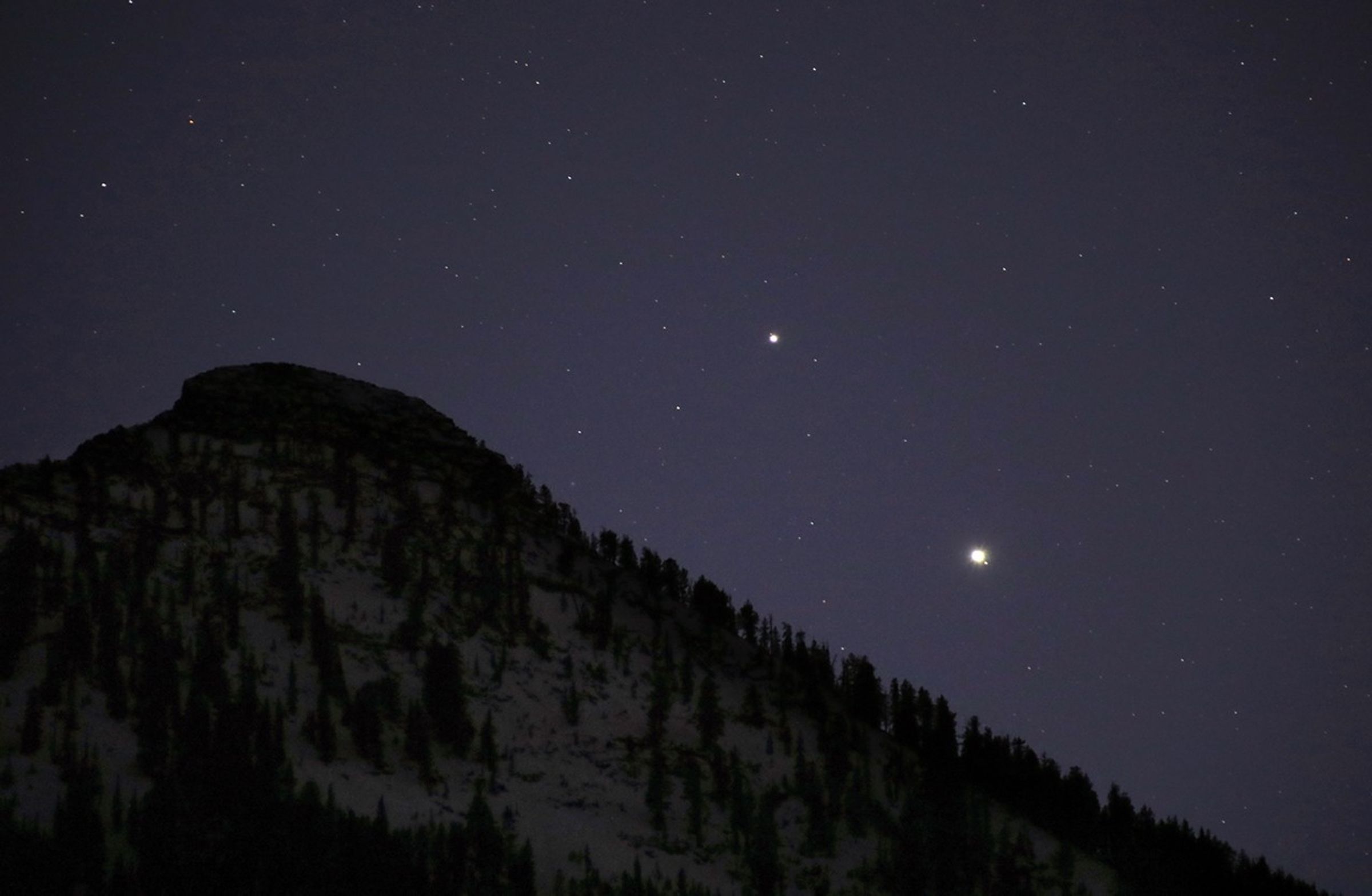The North Star isn't the brightest star in the sky, but it's usually not hard to spot, even from the city. If you're in the Northern Hemisphere, it can help you orient yourself and find your way, as it's located in the direction of true north (or geographic north, as opposed to magnetic north).
Polaris, known as the North Star, sits more or less directly above Earth's north pole along our planet's rotational axis. This is the imaginary line that extends through the planet and out of the north and south poles. Earth rotates around this line, like a spinning top.
Polaris is located quite close to the point in the sky where the north rotational axis points – a spot called the north celestial pole. As our planet rotates through the night, the stars around the pole appear to rotate around the sky. Over the hours, these stars each sweep out a circle around the celestial pole. The farther a star is from the pole, the larger the circle it travels around the sky. Some stars travel a great distance over the course of the night.
Polaris is different. Because it's so close to the celestial pole, it traces out a very small circle over 24 hours. So Polaris always stays in roughly the same place in the sky, and therefore it's a reliable way to find the direction of north. It would appear directly overhead if you stood at the north pole, but farther south, it indicated the direction of north.
How do you find the North Star?
Locating Polaris is easy on any clear night. Just find the Big Dipper. The two stars on the end of the Dipper's "cup" point the way to Polaris, which is the tip of the handle of the Little Dipper, or the tail of the little bear in the constellation Ursa Minor.
Once you're facing toward Polaris, you know you're facing north, which can help you orient yourself any evening you're out stargazing.
The Southern Hemisphere doesn't have a bright star that marks the south celestial pole. Observers there can use other clever ways to find due south, including using the stars of the Southern Cross constellation to point the way.
Polaris has not always been the North Star
One other note about the North Star is that it's a title that passes to different stars over time. Earth's axis of rotation wobbles over the course of about 26,000 years, the way a spinning top also wobbles as it spins. This causes the celestial pole to wander in a slow circle over the eons, sweeping past different stars. Sometimes there's no bright star near the celestial pole, as is the case in the Southern Hemisphere at present. About 14,000 years ago, the celestial pole pointed toward the bright star Vega, and as it sweeps out its slow circle, it will again point to Vega in about 12,000 years.






































